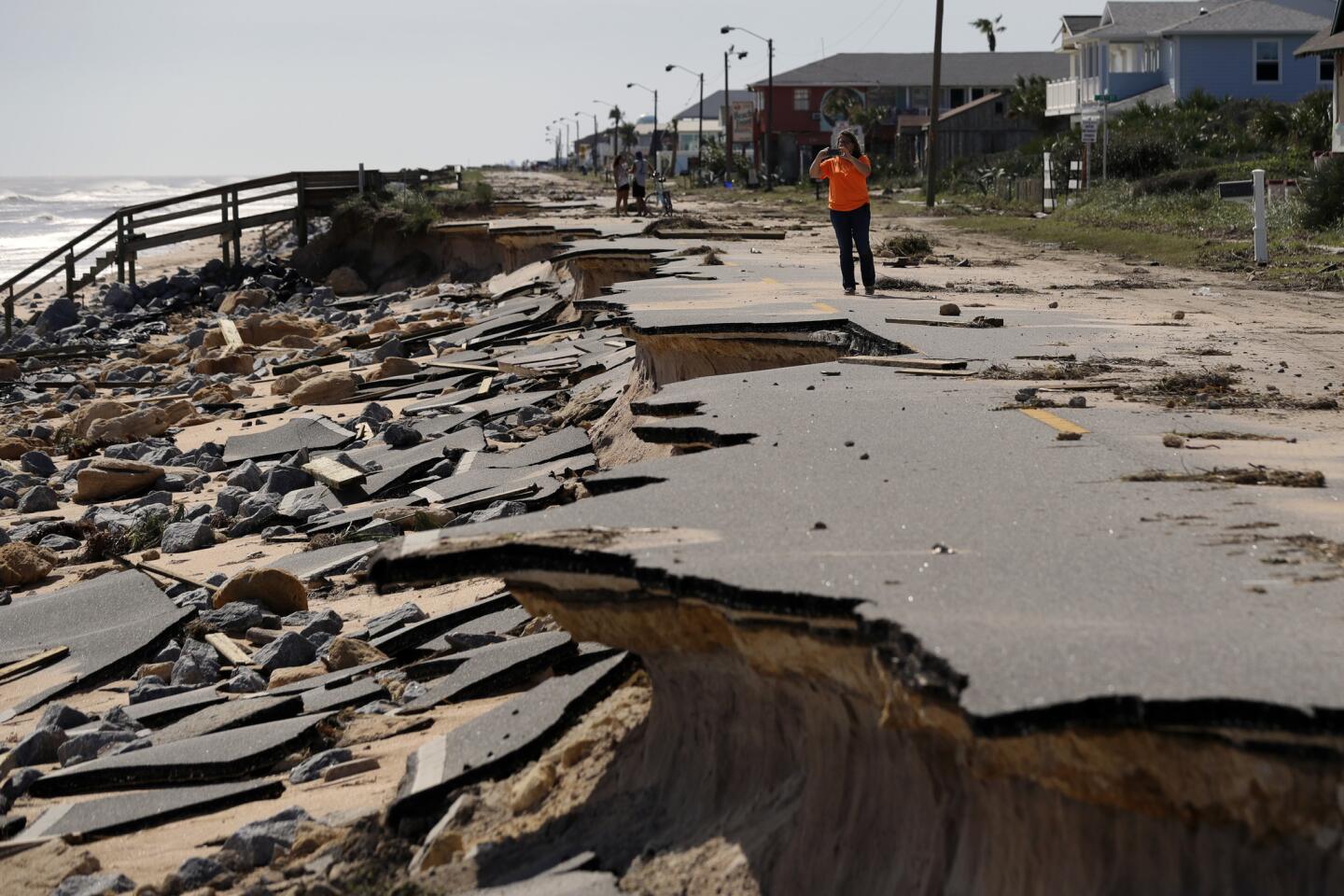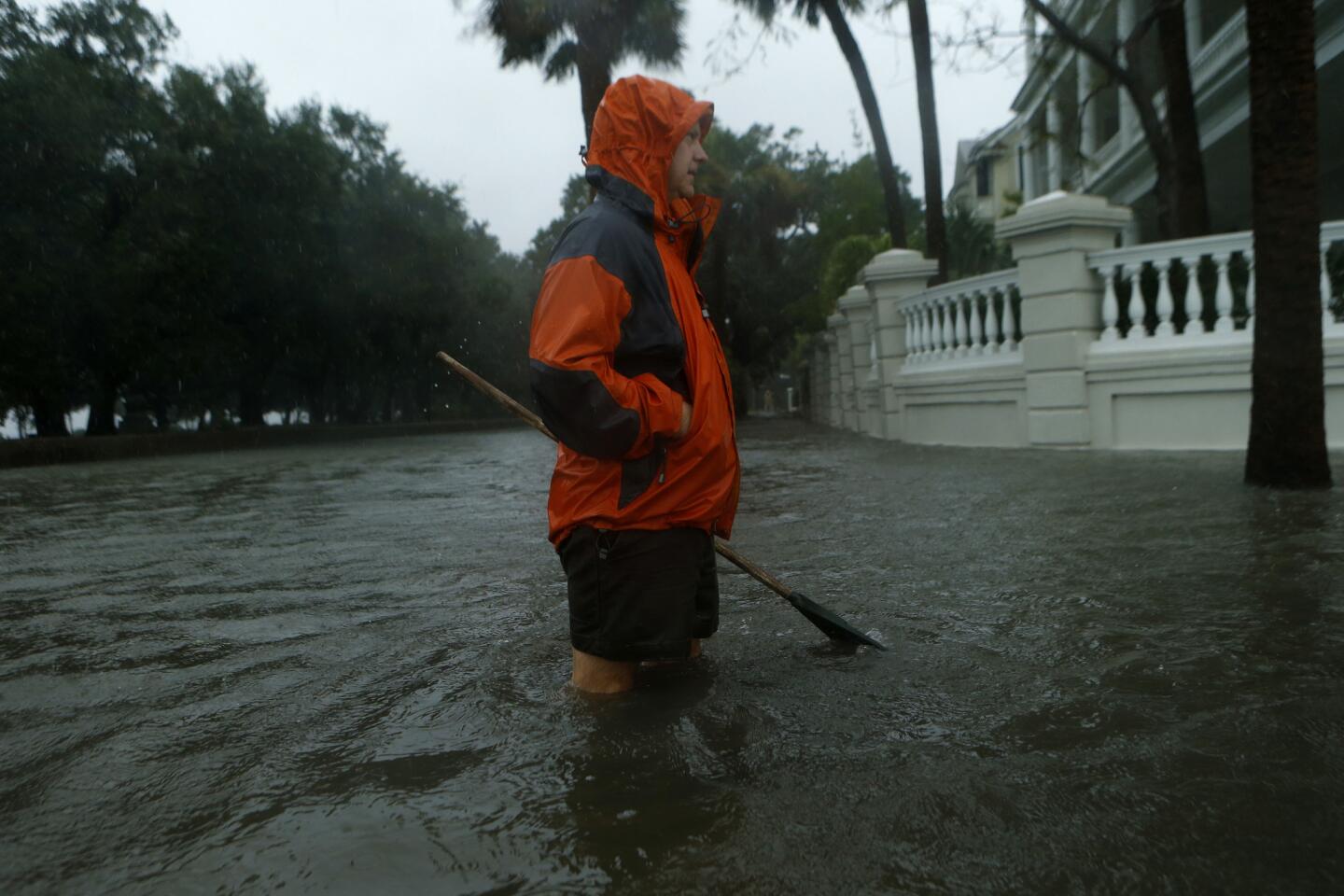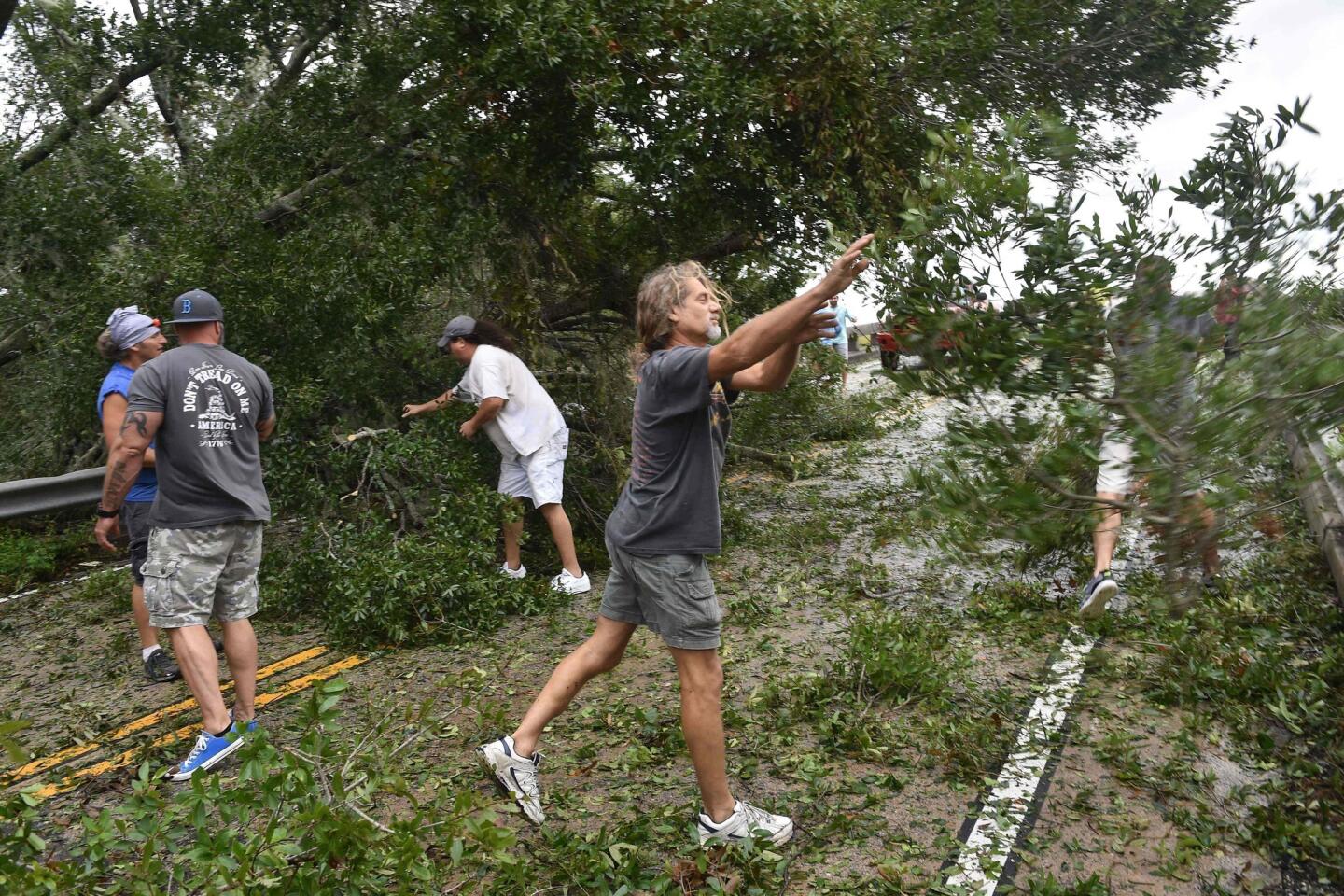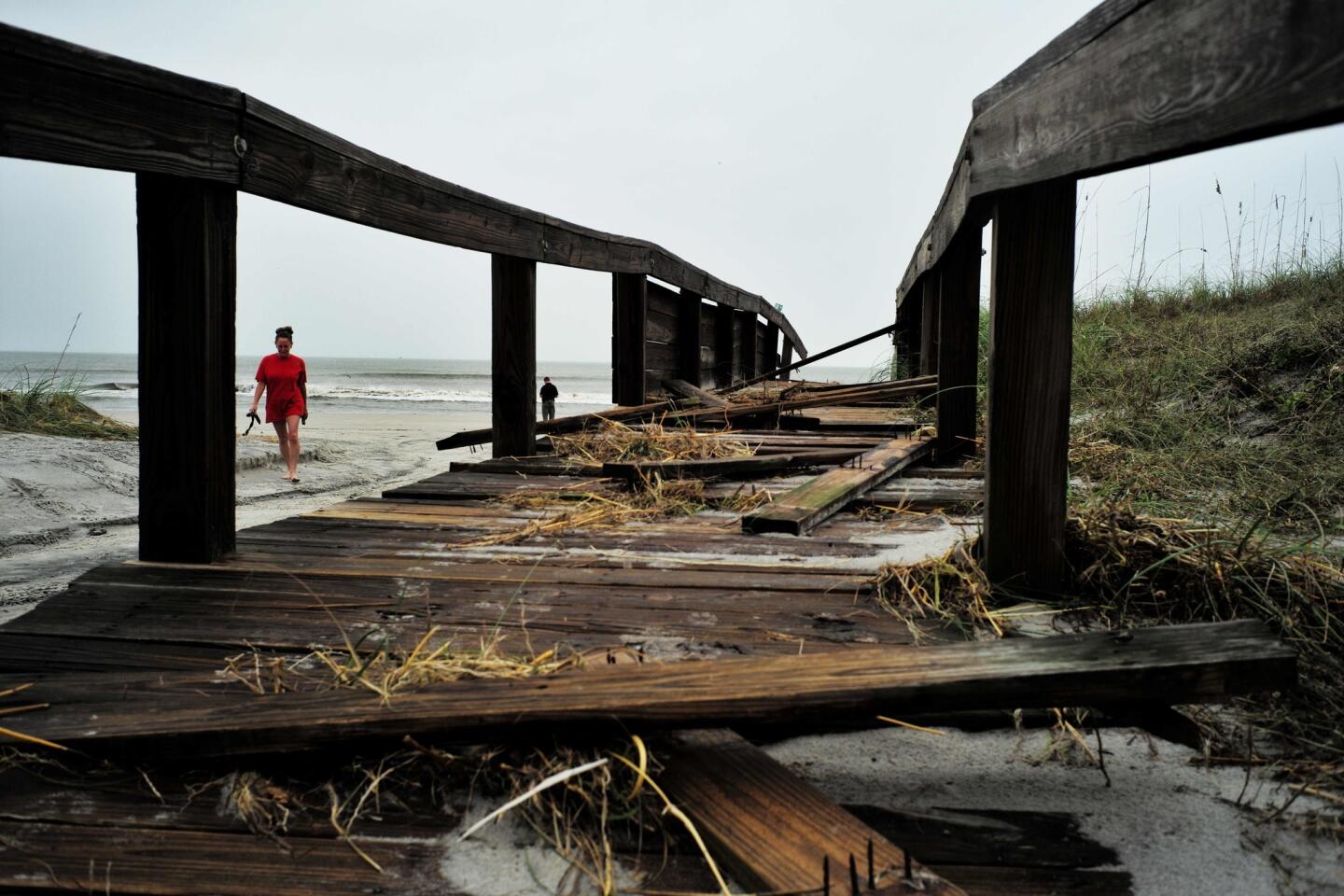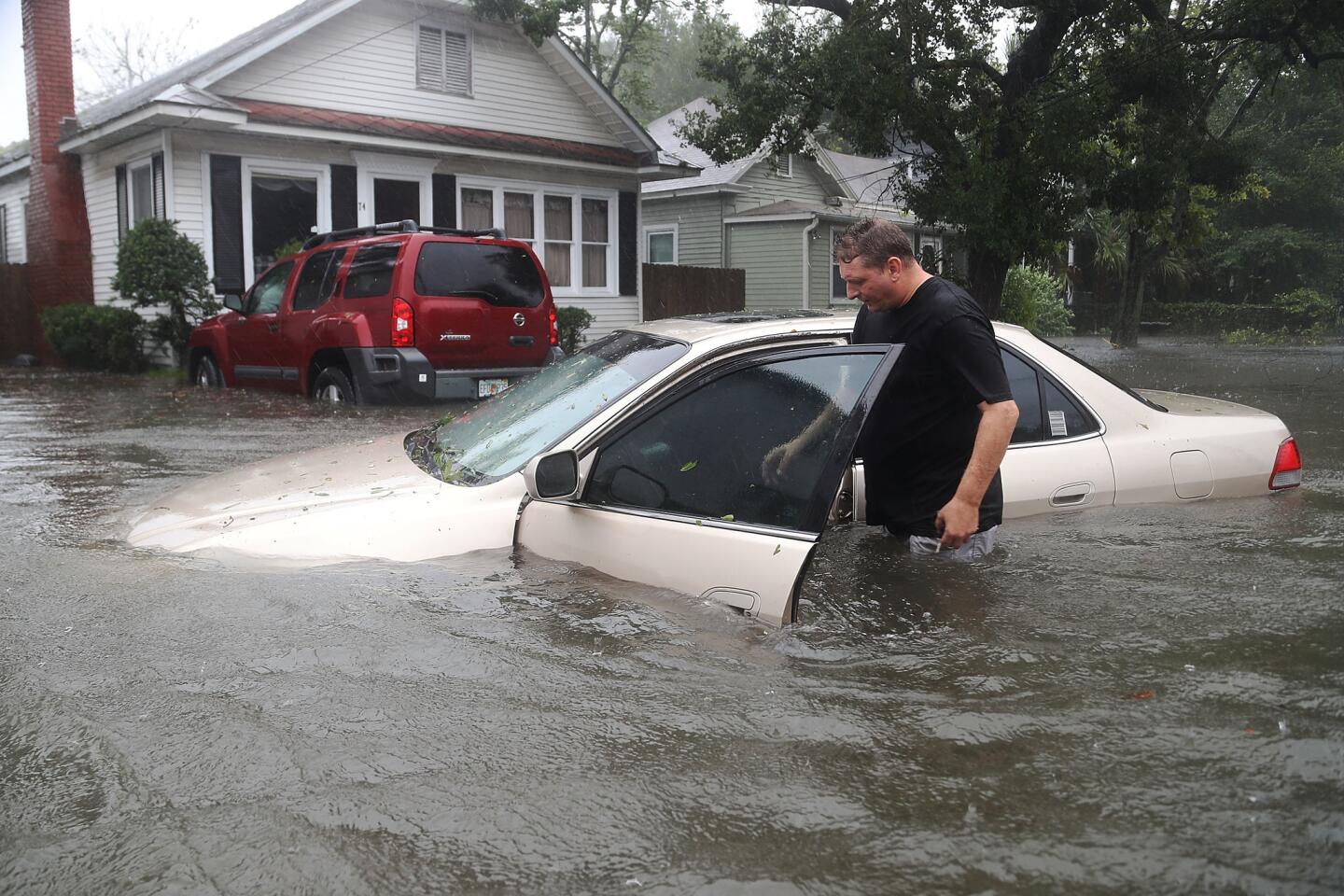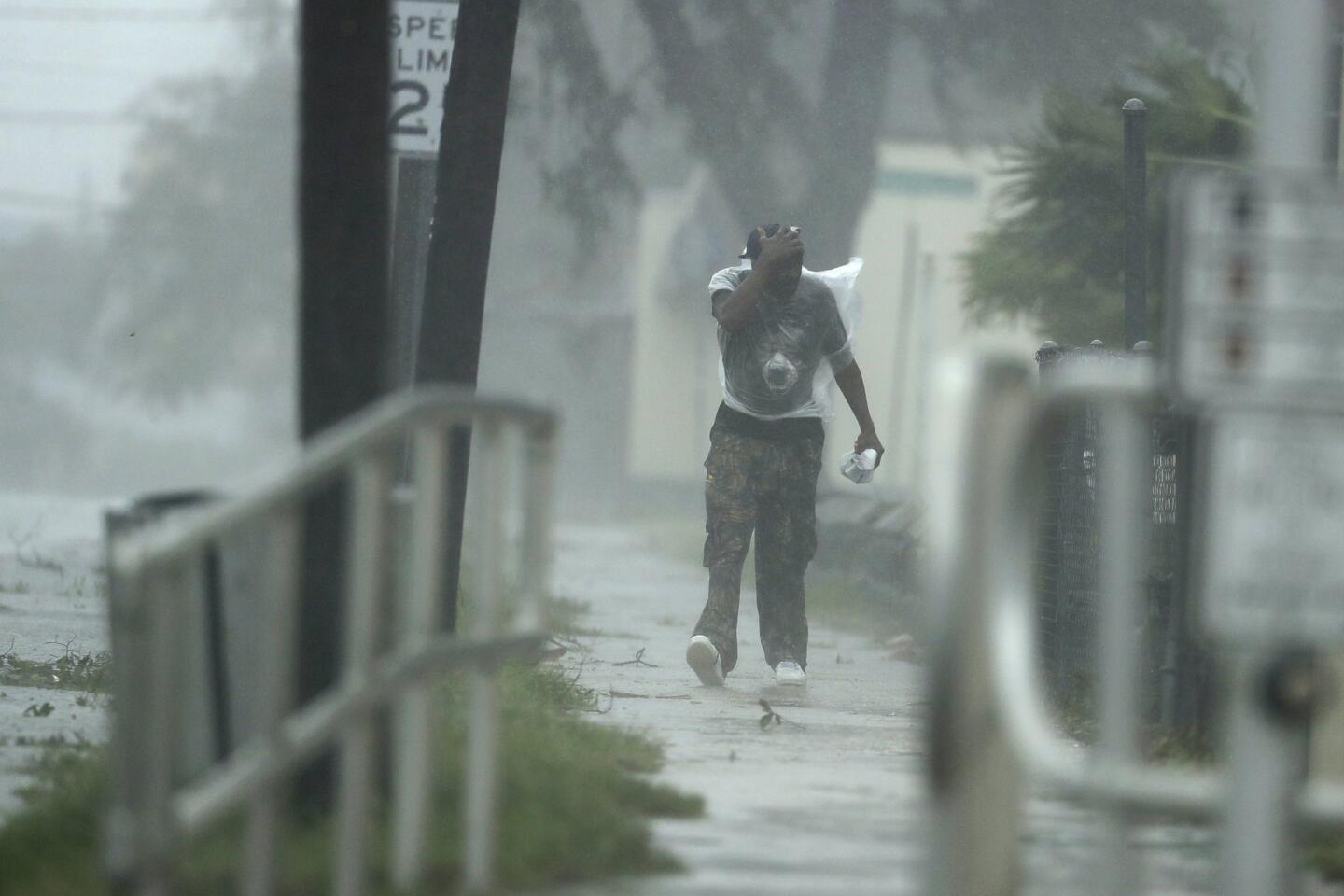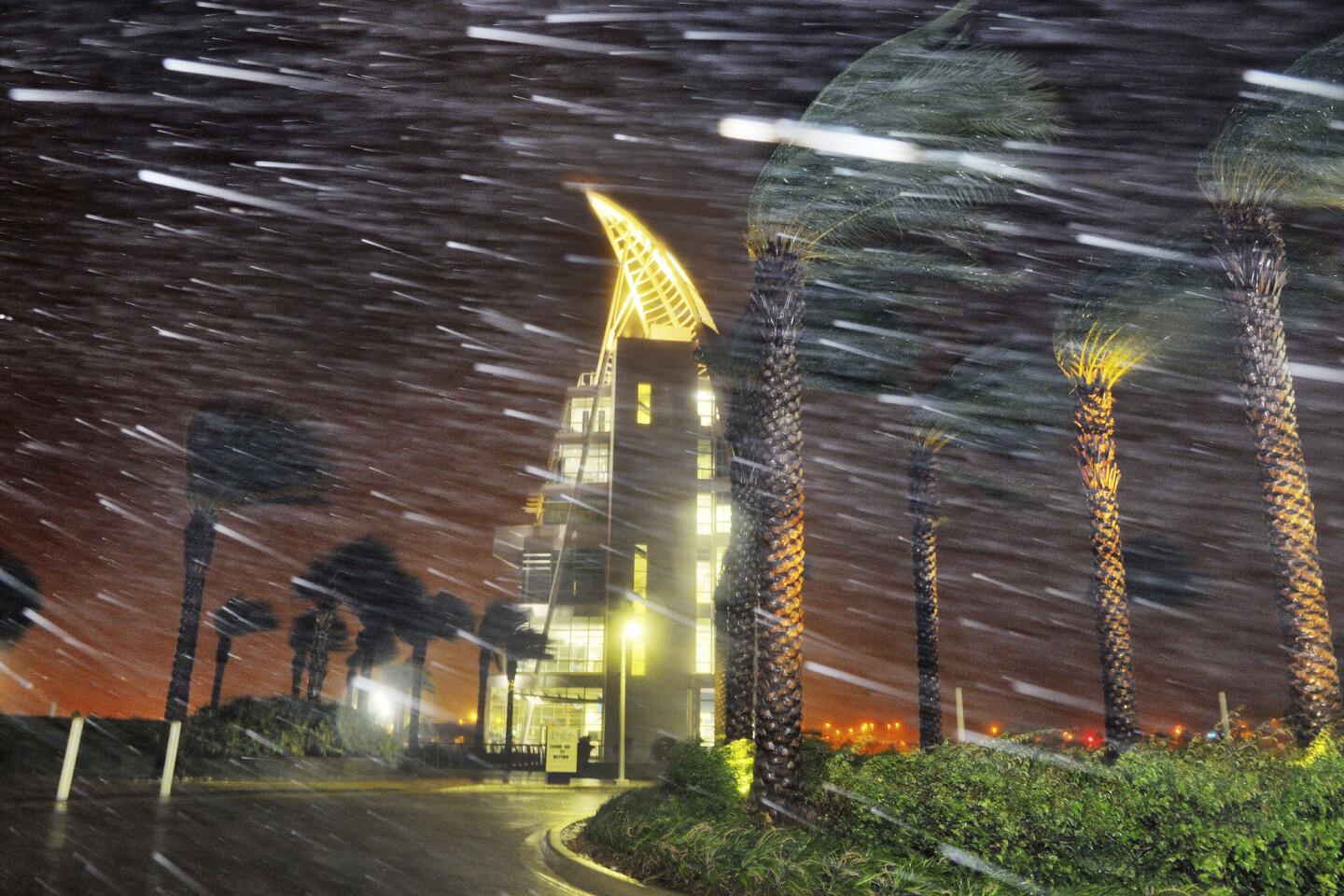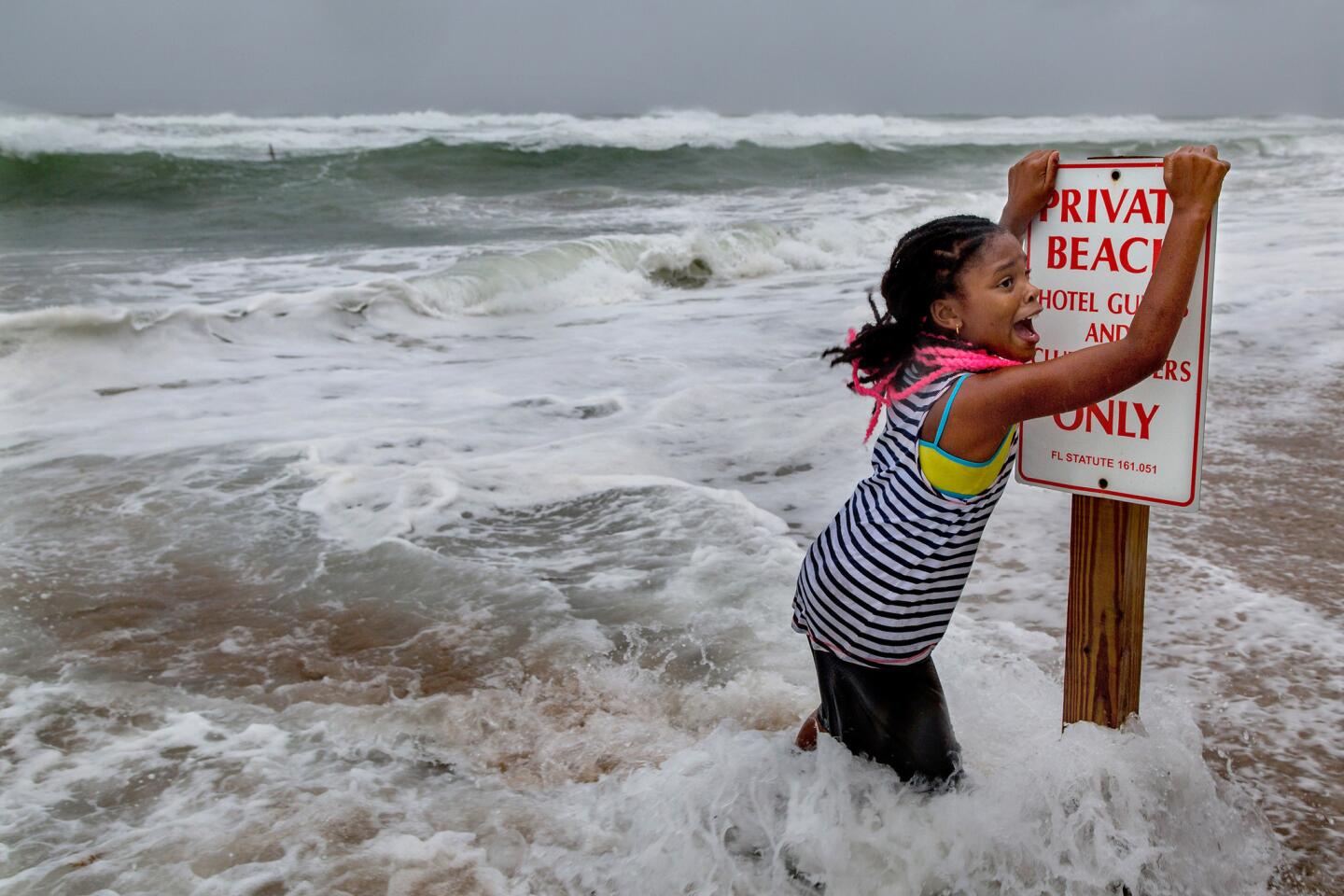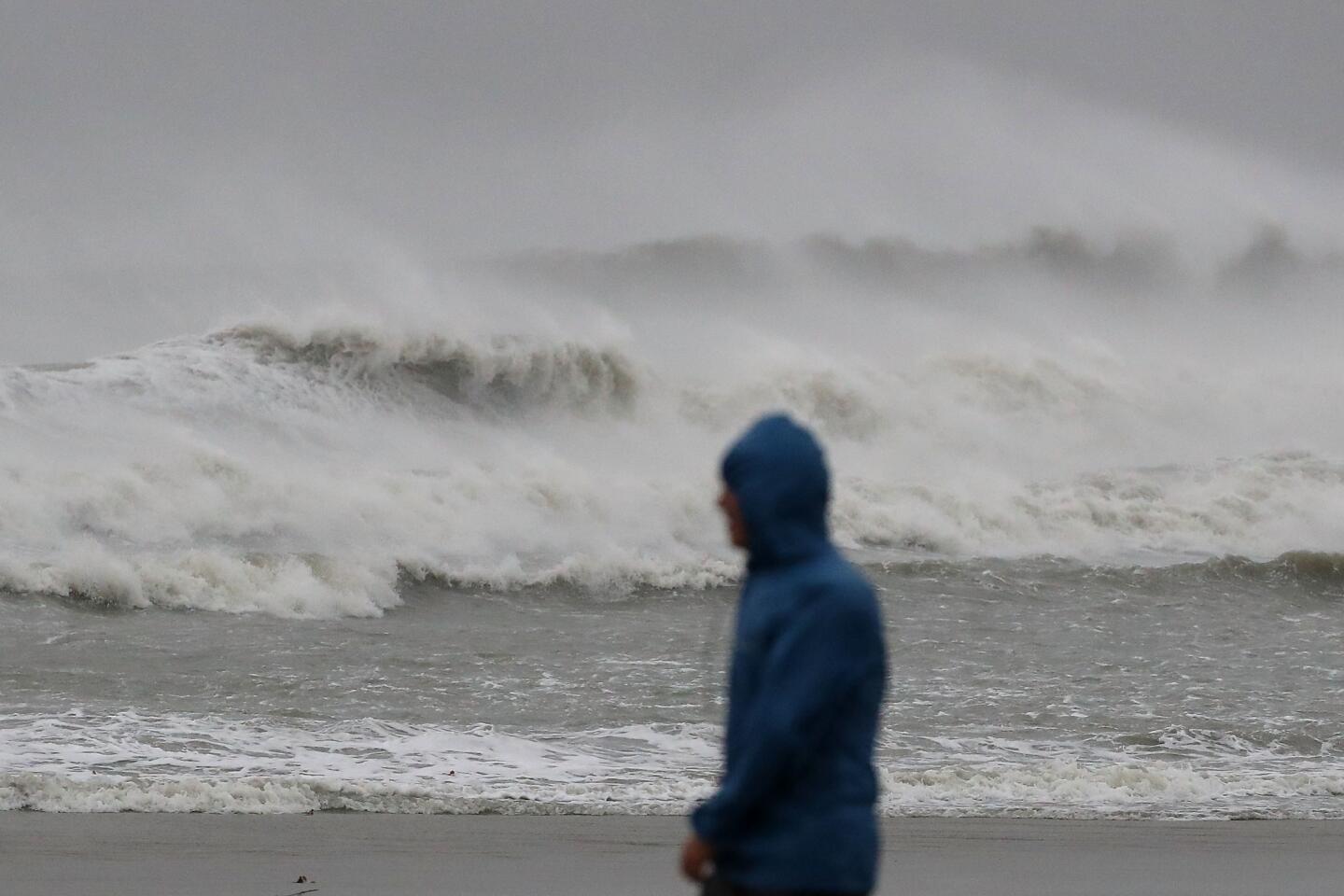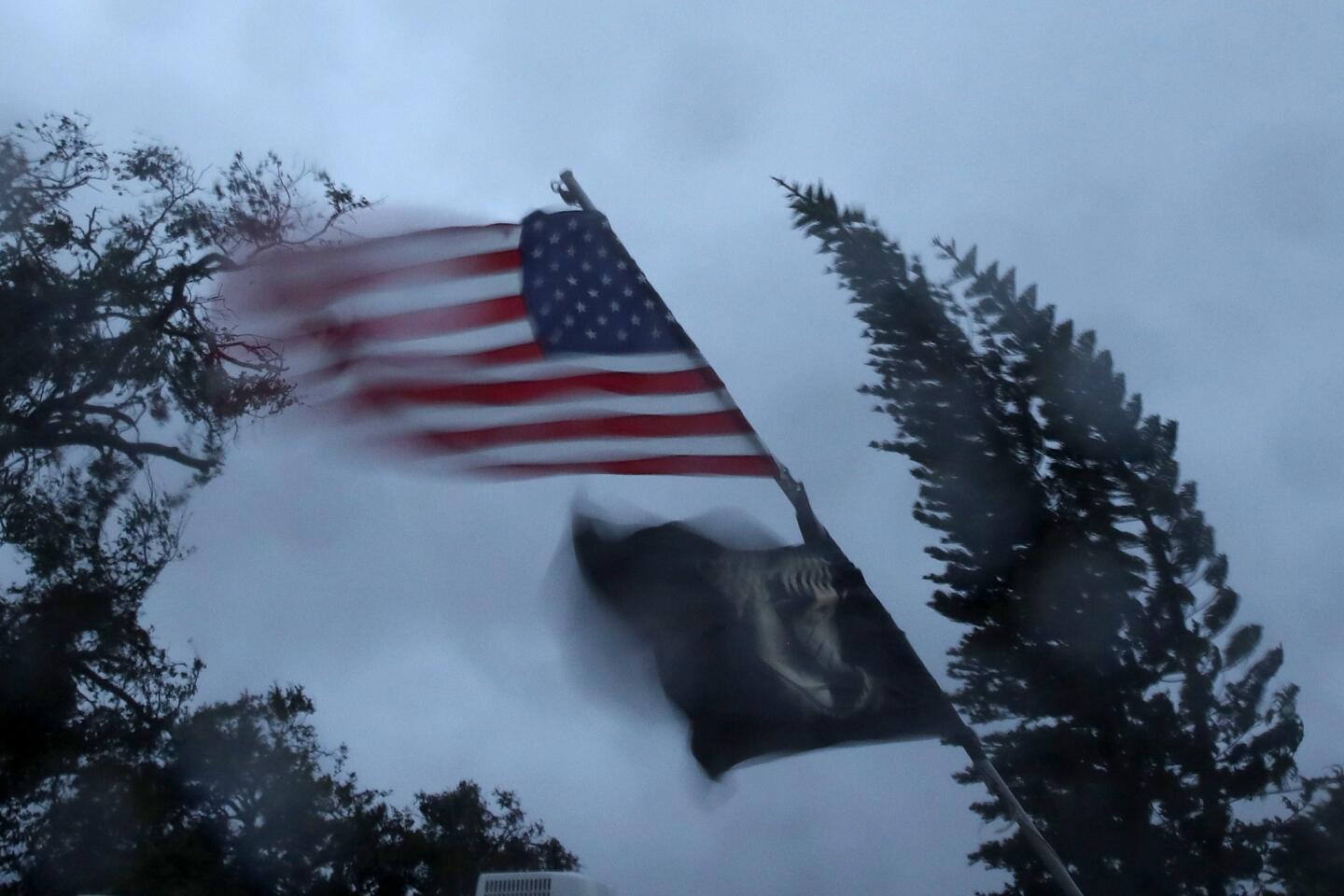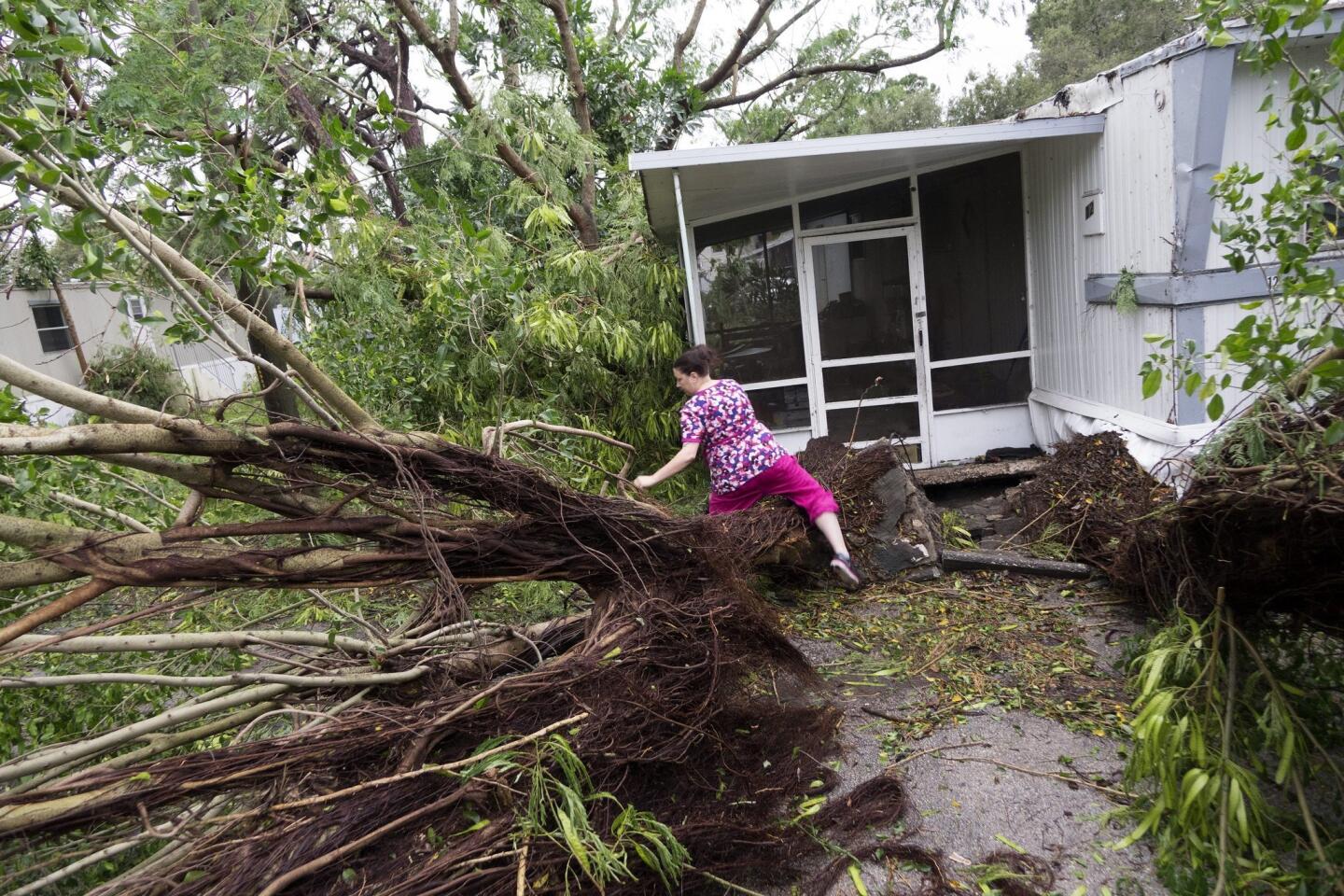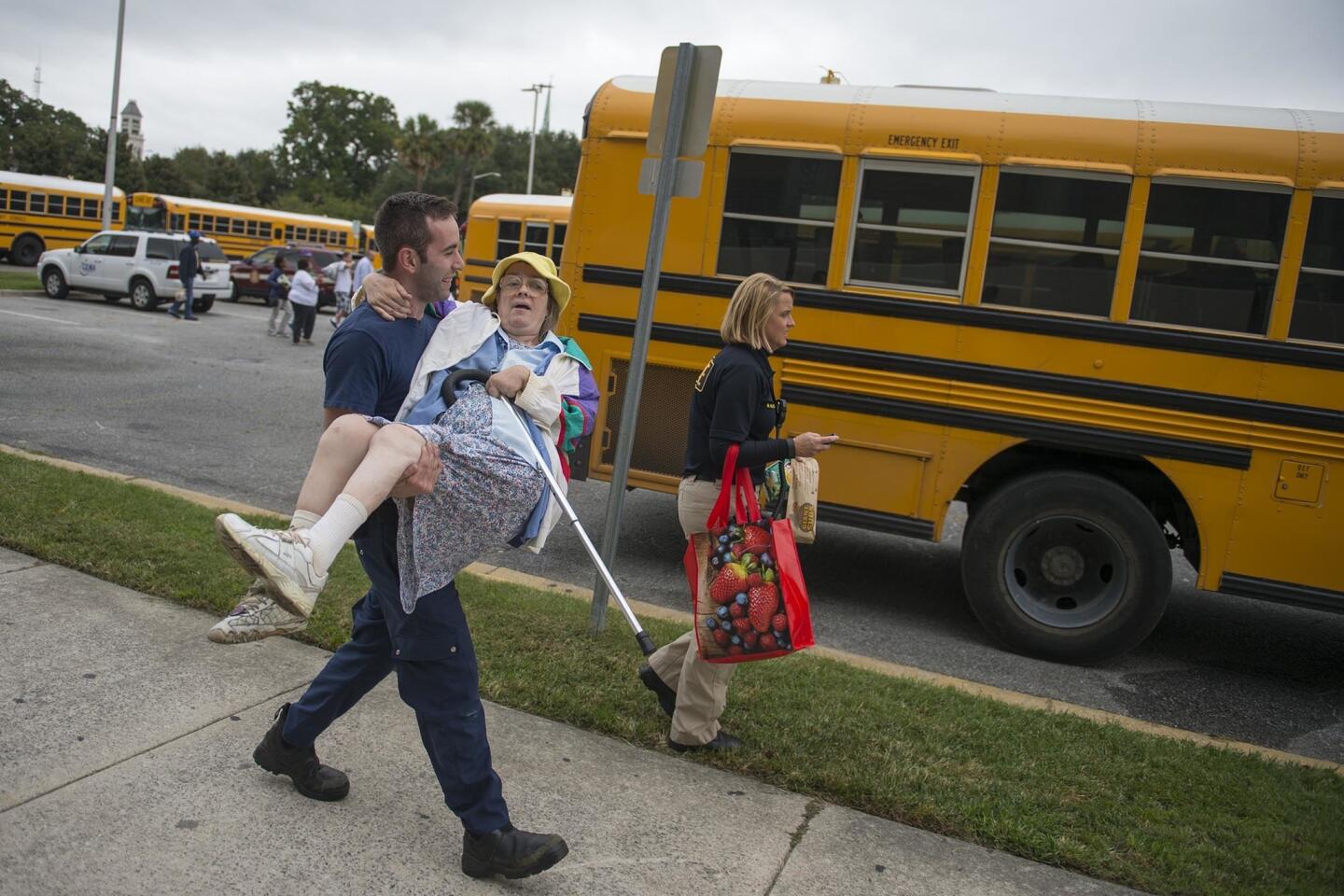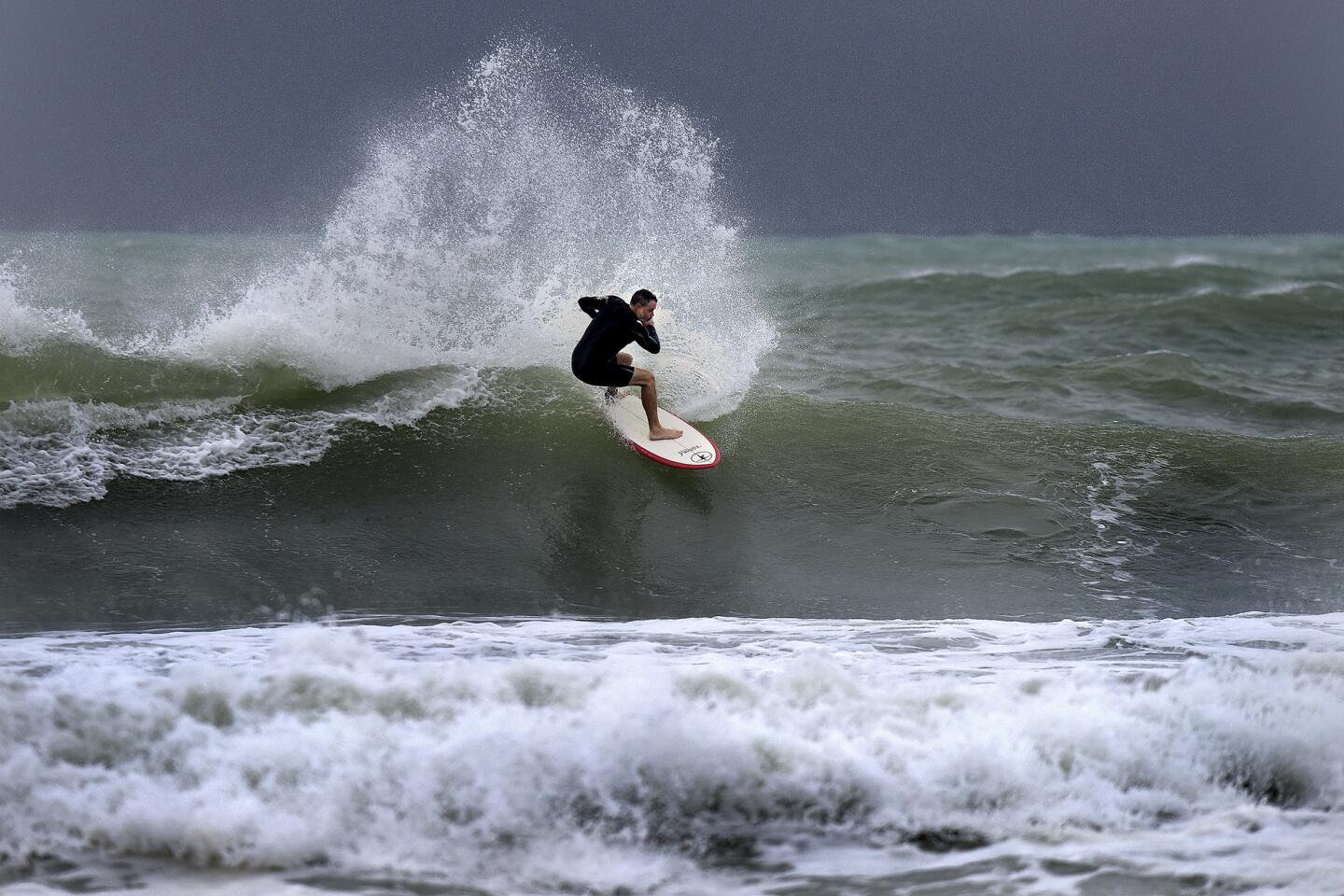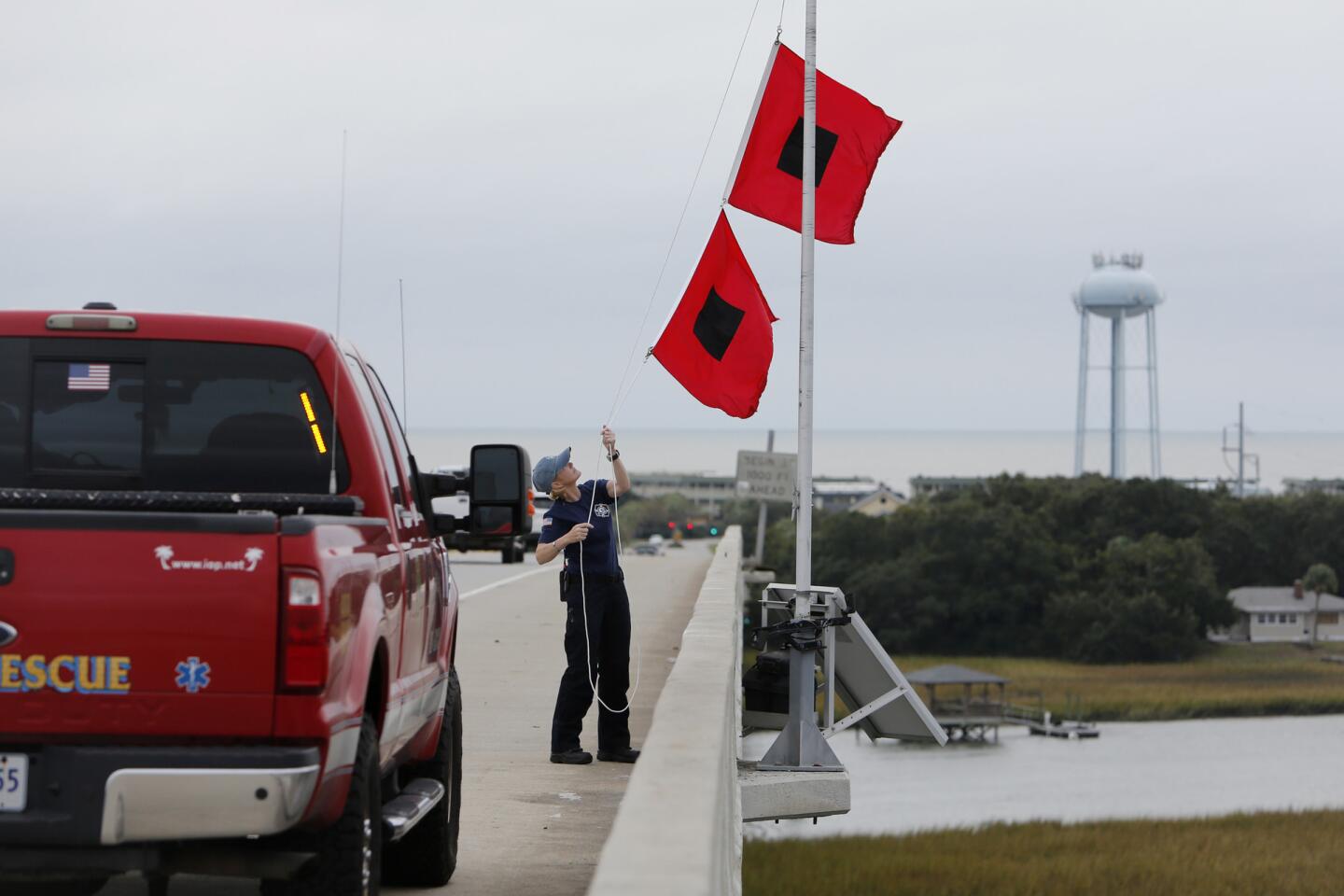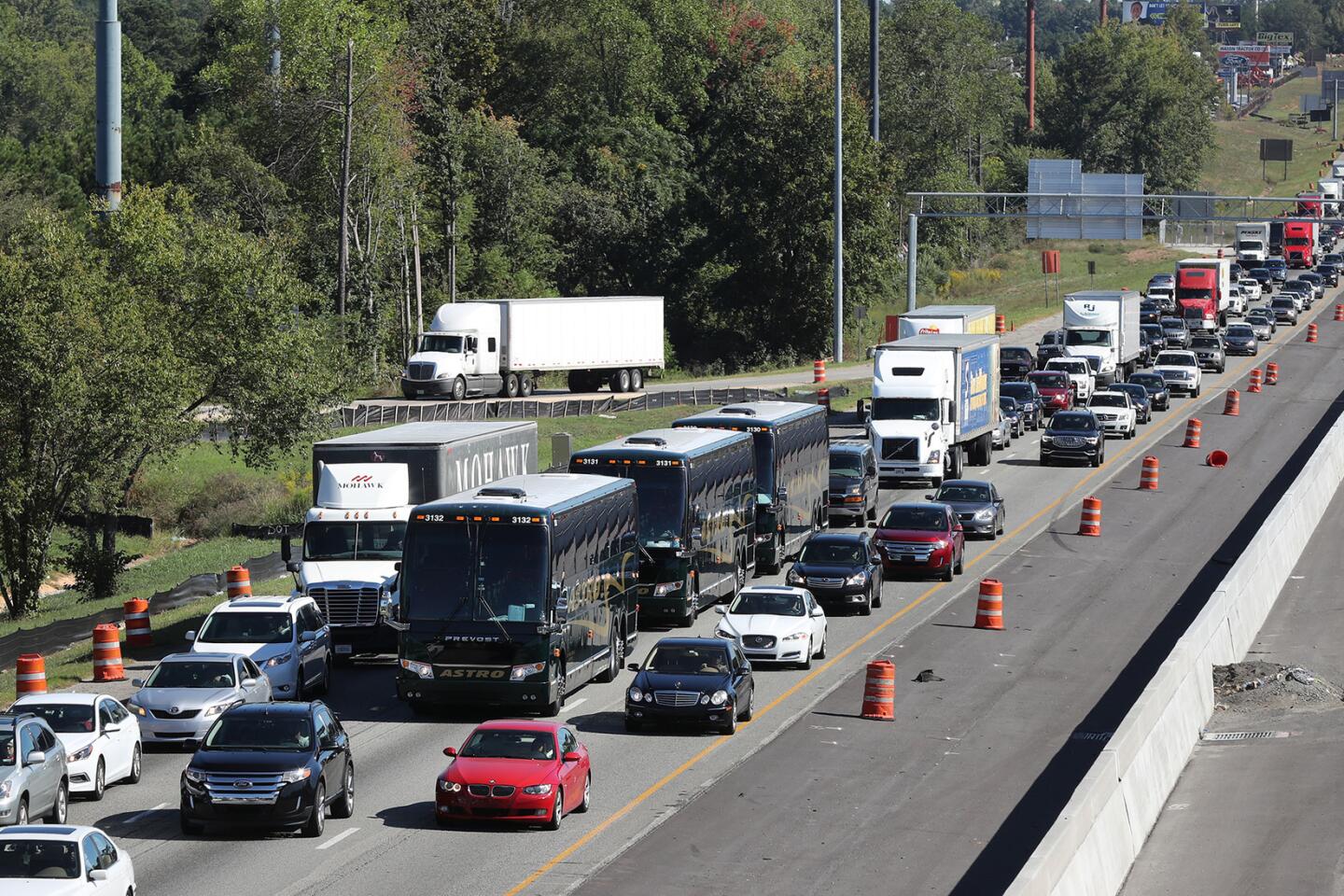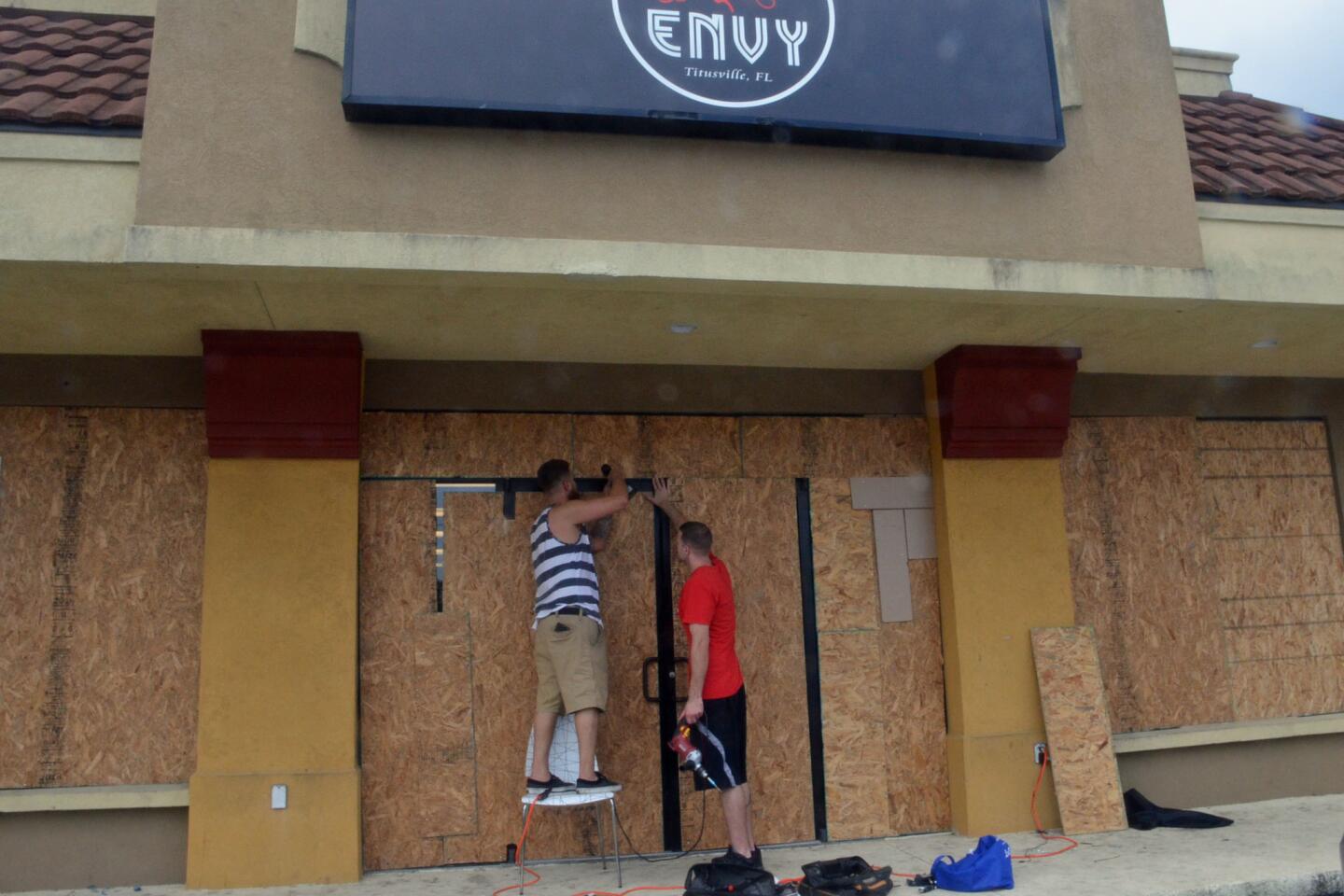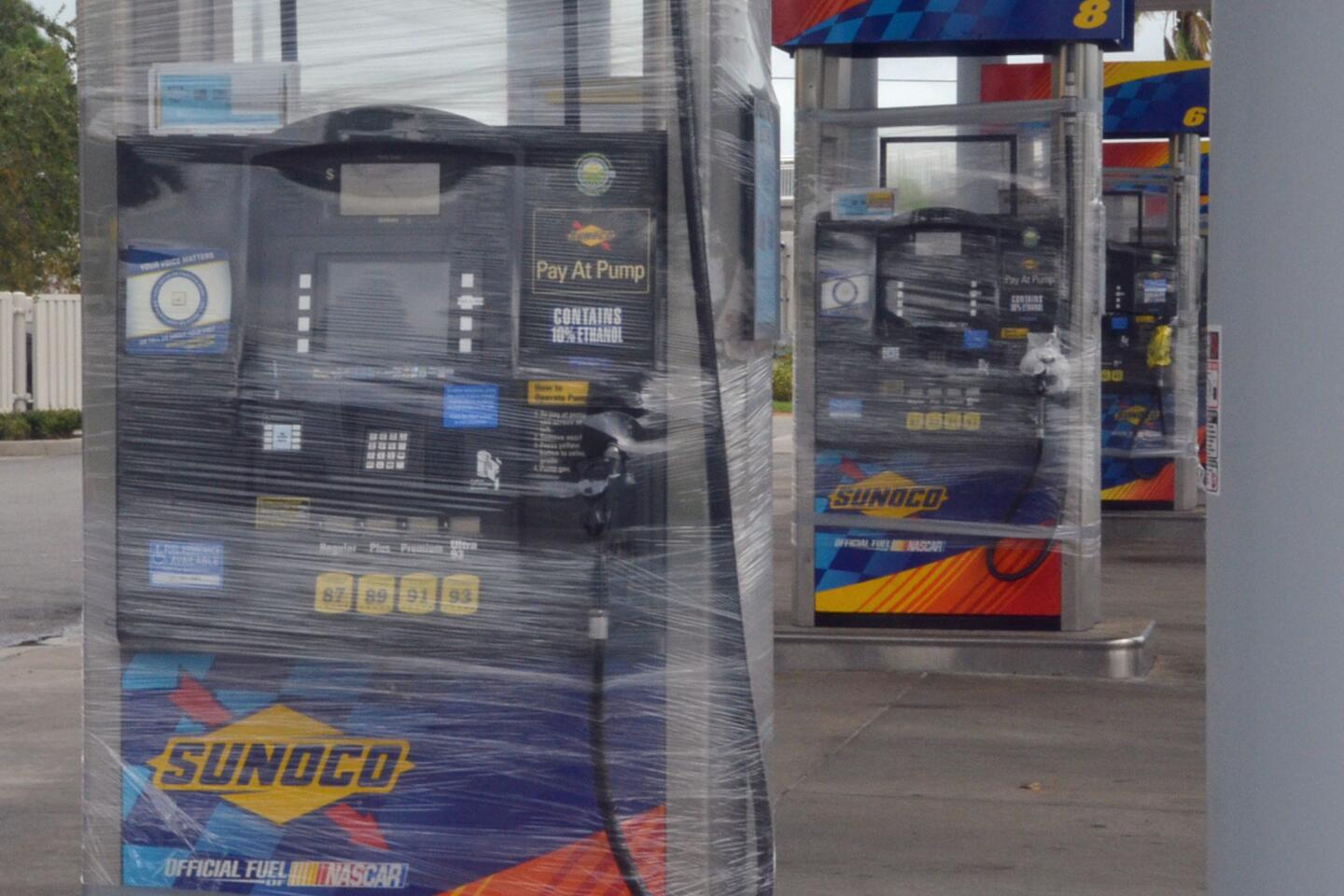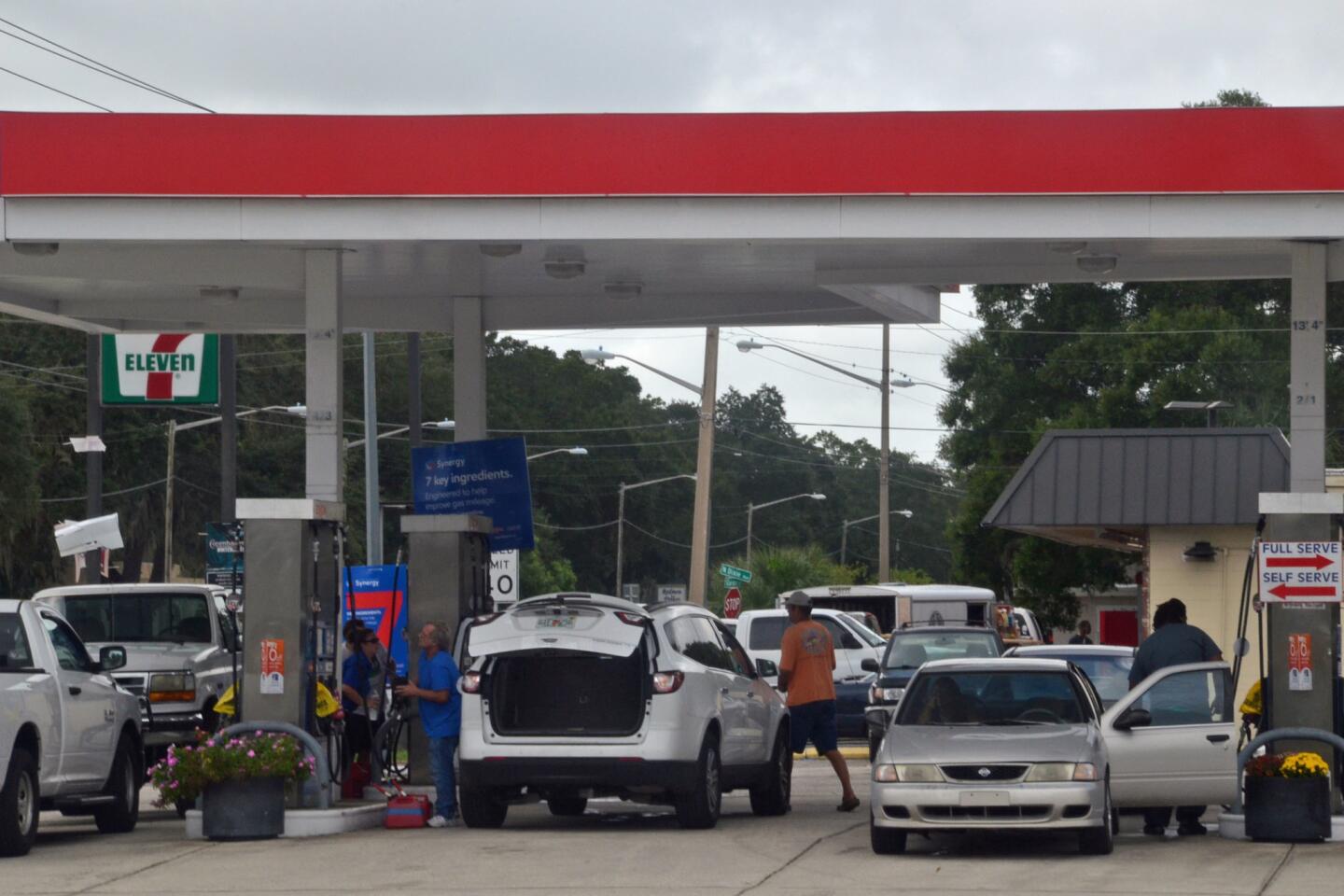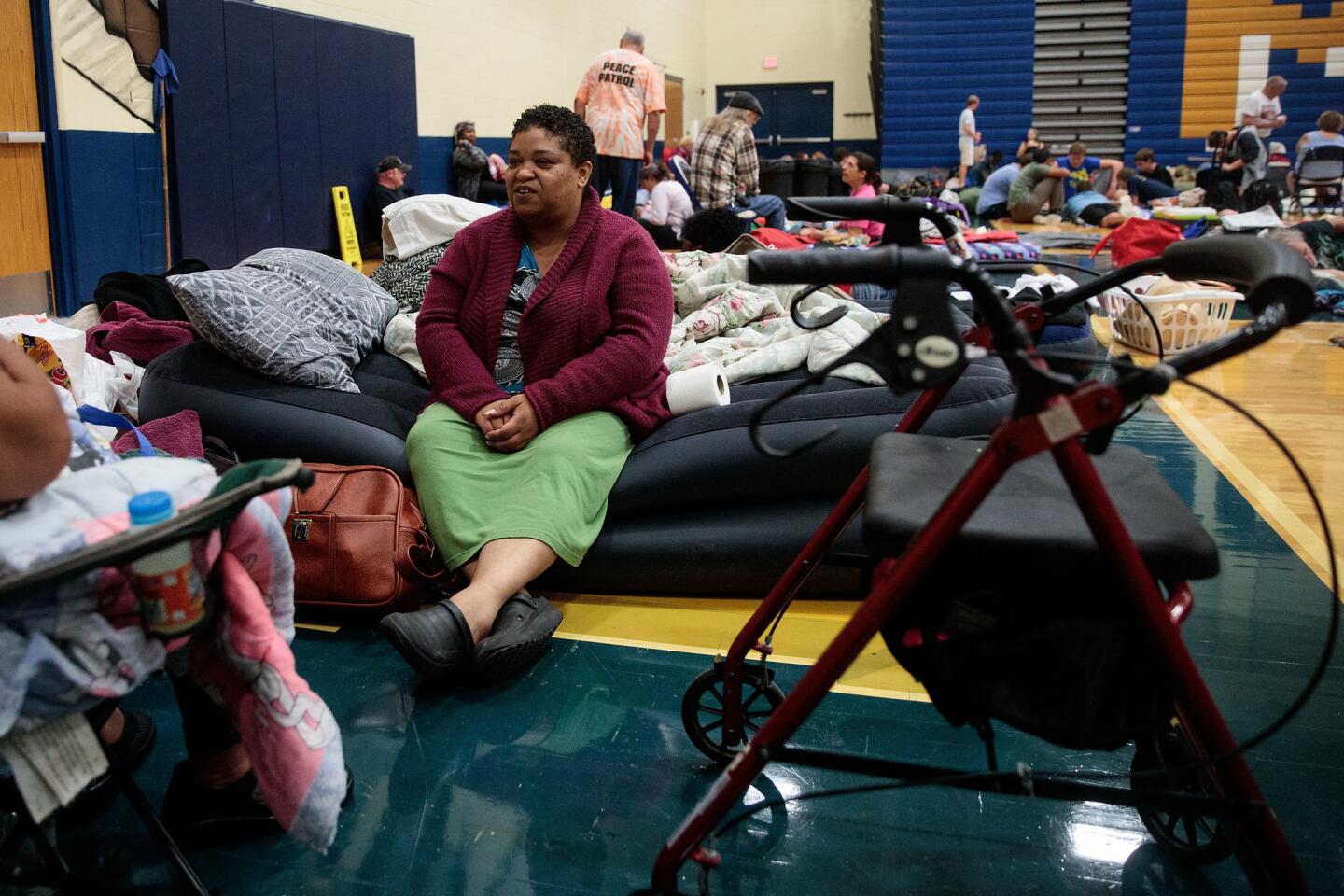Hurricane Matthew loses strength but still packs a punch
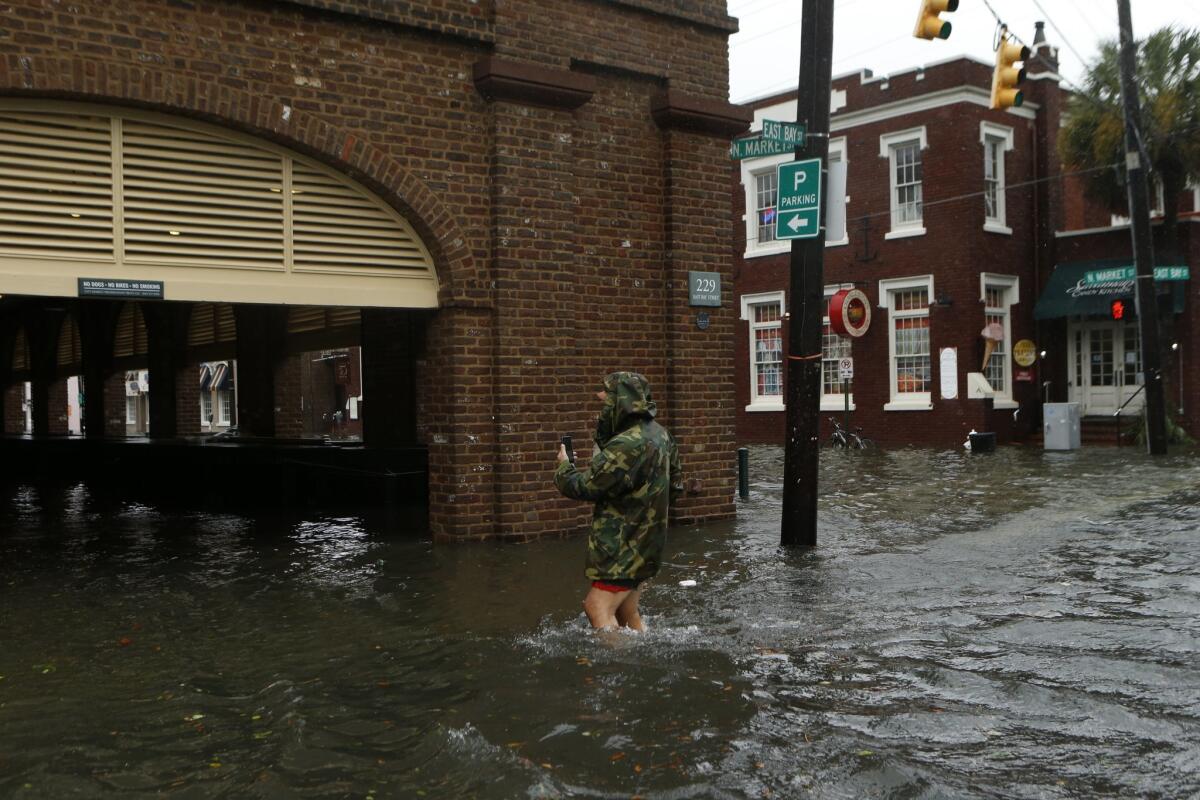
- Share via
Reporting from ST. AUGUSTINE, Fla. — In three decades of living a mere few feet from the mythical Fountain of Youth, William Coleman had never before heard such a sound.
In his low-lying neighborhood, he was accustomed to hearing water sloshing down the street, mud-stuck cars whirring to free themselves, and roaring thunderheads bearing down from the Atlantic.
Then, on Wednesday night, from a bullhorn mounted on a firetruck, a first: “This is a mandatory evacuation. You need to leave now.”
With that, Hurricane Matthew – blamed for hundreds of deaths in impoverished Haiti when it roared through the Caribbean earlier this week – announced its imminent arrival.
As in locales up and down the southeast coast, it was now the turn of St. Augustine -- a city brimming with historic charm, built on the site where legend holds that conquistador Juan Ponce de Leon, in 1513, discovered a spring with magical properties to impart eternal youth.
The storm, which briefly made landfall in South Carolina on Saturday as it surged up the coast from Florida, was blamed for at least 15 deaths in three states.
Although Matthew was losing power -- downgraded to a Category 1 hurricane early Saturday, and expected to drop back to tropical storm status overnight -- it continued to wield a powerful punch, knocking out power to hundreds of thousands of people, toppling trees and spawning torrential floods.
Four deaths were blamed on the storm in Florida, three in Georgia and three in North Carolina. They included two people who died in a submerged car in Bladen County, N.C., and a man who died when two trees fell on his home in Bulloch County, Ga.
Even after losing some of its fury, the hurricane continued Saturday to lash the coasts of Georgia and the Carolinas, including vulnerable barrier islands and the stately centers of Savannah and Charleston, where floodwaters filled some historic streets.
In South Carolina, downed trees cut off the two roads onto the resort island of Hilton Head, dotted with iconic pines, as water washed across roadways.
Governors of affected states, together with local officials and meteorologists, repeated warnings against being lulled into complacency by the relatively glancing blow dealt a day earlier to Florida, where homeowners were navigating flooded streets and assessing damage.
Before making landfall, Matthew had been the strongest hurricane to menace the Atlantic seaboard in nearly a decade. Evacuation orders covered more than 2 million people, triggering massive traffic jams and packing inland hotels.
In the end, the hurricane skirted heavily populated south Florida and battered cities farther north without its center ever coming ashore in the state. By Saturday, the powerhouse tourist attractions in Orlando – Walt Disney World, Universal Studios and SeaWorld – had all reopened.
But danger remained. Joining in the appeals against complacency was North Carolina Gov. Pat McCrory, who urged residents not to let their guard down just because Matthew had lost some of its punch. South Carolina saw some of its highest coastal tides on record Saturday.
In Georgia, which has only 100 miles of coastline, Gov. Nathan Deal doubled a National Guard activation to 2,000, and went on Twitter to urge coastal residents not to return to their homes until the safety of roads and bridges could be ascertained.
“I know you want to see your homes,” said South Carolina Gov. Nikki Haley, also urging people to remain in shelters rather than venturing back to evacuation zones.
Back in St. Augustine, as the storm bore down, Coleman had heeded the bullhorn warning. He packed what he could and drove north and inland to Jacksonville, which also found itself in the hurricane’s path. In his absence, rising waters lapped just inches from his front door, a tenant who lived out back told him.
For Coleman, that was inches from complete financial ruin. He couldn’t afford the prohibitively expensive flood insurance on the property, and says many of his neighbors had made the same choice.
“You build your house two, three feet off the ground, you can get by without it,” Coleman said Saturday, surveying the damage on his street. “But then this storm came. I still can’t afford it, you know. This time I almost lost what I have.”
It’s ironic, in a way: Water is what brought people here. Ponce de Leon’s spring – which did not help him escape mortal wounds from the local Calusa in 1521 -- lives on as a tourist attraction. But what benefits it affords the locals, they cannot say.
When the water from Hurricane Matthew flooded Williams Street, it pushed into the small home that Matt and Roxie Seward rent.
“It was like nature invaded us,” Roxie Seward said.
She attends Flagler College, which also flooded, and plans to graduate in May.
“I better graduate on time,” she said. “Not another year here.”
Matt is a bike mechanic in downtown St. Augustine, and when the warnings came, they packed what they could into their 1998 sea-green Toyota Camry and fled to higher ground in Orlando.
When they returned, it was as if their home had been broken into. The flooding pushed over garbage cans, rifled through cabinets and soaked anything within two feet of the floor.
On Saturday morning, they pulled out their possessions and tried to dry them in the front yard. Woolen ponchos hung from an oak tree.
“Hey, you need a sump pump, bro?” asked a neighbor driving a white pickup truck with a Trump 2016 sticker on its rear windshield.
Matt Seward thanked him and said he didn’t.
“The landlord said it could go either way,” he said, as he wrung out floodwater from a blue blanket. “If the walls don’t dry out, it’ll mold, and then we have to get out.”
He weighed that, considering the possibility of a fresh displacement.
“But we’ll sleep here tonight,” he said, “and wait.”
Staff writer Laura King contributed to this report from Washington.
ALSO
Where Hurricane Matthew hit hardest: Hundreds dead in ravaged Haiti
A ghost town in Florida: In the shadow of Hurricane Matthew
How much more must Haiti endure?
UPDATES:
7:05 p.m.: This article was updated with the death toll in the U.S. rising to 10 and other details.
12:15 p.m.: This article was updated with reports of additional deaths.
11:35 a.m.: This article was updated with additional reporting and comments from residents of areas affected by the storm.
This article was originally published at 8:25 a.m.
More to Read
Sign up for Essential California
The most important California stories and recommendations in your inbox every morning.
You may occasionally receive promotional content from the Los Angeles Times.


